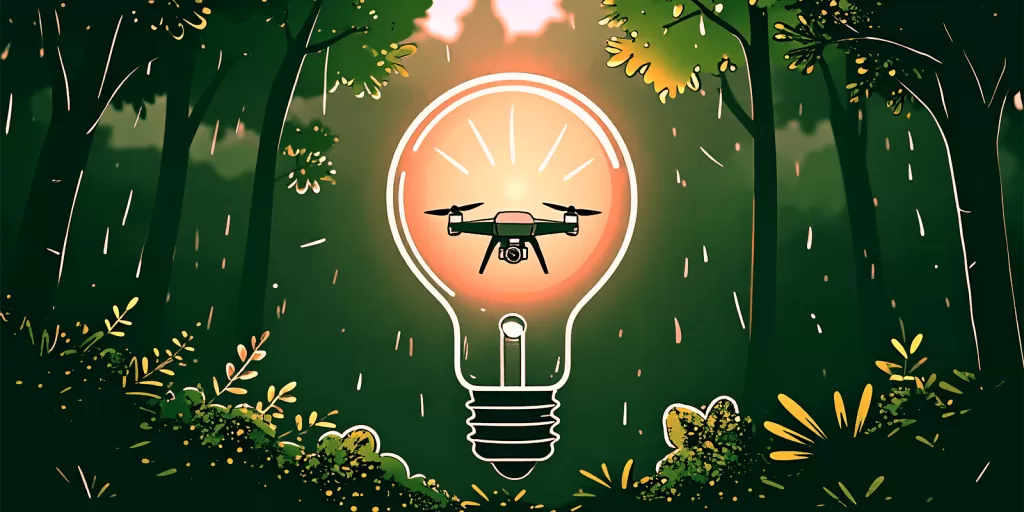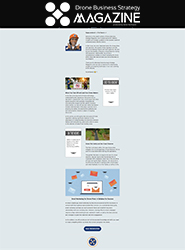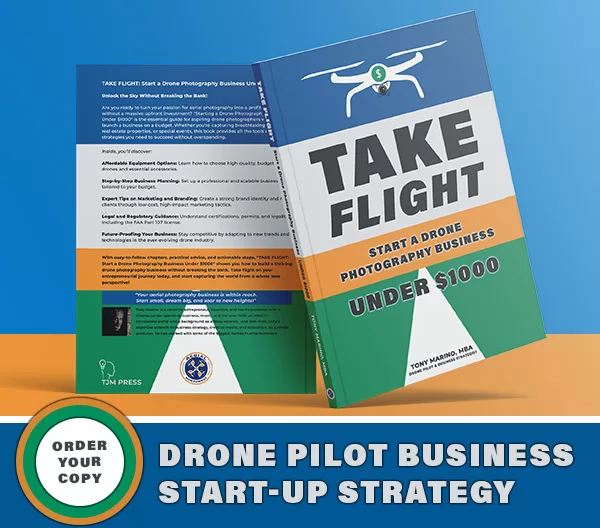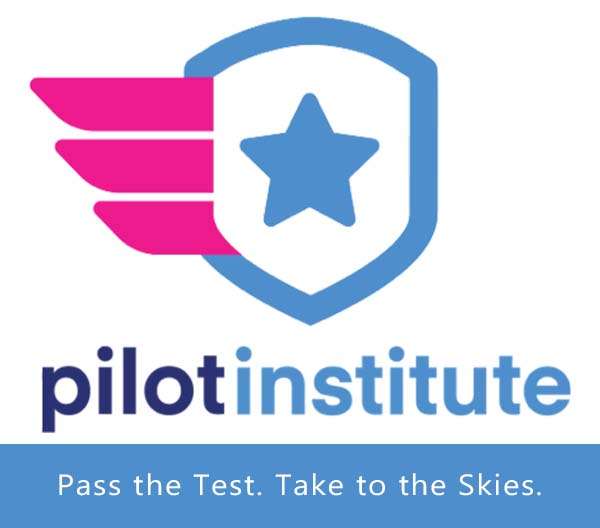
As a drone pilot, your role extends far beyond just capturing stunning aerial footage or delivering services for commercial projects. The use of drones is increasingly recognized as a powerful tool for tackling some of the most pressing environmental challenges we face today. From wildlife conservation to climate change research and disaster response, drones have become invaluable allies for researchers, governments, and conservationists worldwide.
But why does this matter to you?
As drone pilots, understanding the environmental impact of your technology can unlock significant opportunities for your business—both ethically and economically. By integrating this knowledge into your service offerings, you position yourself as an essential partner in efforts that address global environmental issues. Whether you’re working with conservationists, researchers, or even government agencies, your ability to provide data-driven insights while reducing human impact can set your business apart in a rapidly evolving marketplace.
As the demand for environmentally-conscious solutions grows, understanding the intersection of drones and sustainability will give you a competitive edge. This isn’t just about doing good; it’s about creating a new business framework that aligns with the needs of today’s world.
In this article, we’ll explore how drones are being used in various environmental sectors and how you—by integrating these insights into your drone service strategy—can expand your business, attract new clients, and become a leader in the eco-conscious tech space. Whether you’re in wildlife conservation, climate change research, or disaster relief, leveraging the unique capabilities of drones can position you as a go-to service provider for projects that matter. Let’s carefully consider the environmental impact of drones and discover how these principles can fuel your drone business expansion strategy.
1. Wildlife Conservation: Tracking and Protecting Endangered Species
Drones are becoming indispensable tools for monitoring wildlife, offering a non-intrusive way to track species and reduce human disturbances in sensitive habitats.
Minimal Disturbance to Wildlife: Drones can fly over remote habitats, capturing images and data without the need for humans to physically enter the environment. This reduces the risk of disturbing wildlife, which is particularly important for species that are sensitive to human presence. For instance, drones can monitor nesting birds or large mammals like elephants without any direct interference.
Tracking Poaching and Illegal Activities: Drones equipped with high-resolution cameras and thermal imaging can detect poachers and illegal logging activities in real-time, helping park rangers or law enforcement respond swiftly to environmental crimes. In wildlife-rich areas, drones have become essential in fighting poaching, where every moment counts in protecting endangered species.
Thermal Imaging for Night Monitoring: Drones with thermal sensors can operate at night, enabling researchers to track animals when they are most active or hard to spot in dense forests. This has been especially useful for monitoring nocturnal animals like owls or for studying the movements of migrating species that travel at night.
Remote and Difficult Terrain Monitoring: Many endangered species live in hard-to-reach areas, like deep forests, mountains, or wetlands, where it’s impractical or dangerous for humans to go. Drones are capable of accessing these places, allowing scientists to track the health and movement of wildlife without disrupting their natural behaviors.
2. Climate Change: Gathering Critical Environmental Data
Drones are crucial in collecting real-time data on the effects of climate change, especially in remote or hazardous areas that are otherwise difficult to study.
Monitoring Glaciers and Ice Caps: Glaciers and polar ice caps are some of the most sensitive indicators of climate change. Drones equipped with LiDAR sensors and high-resolution cameras can capture detailed topographic data, allowing scientists to measure changes in ice thickness and the extent of melting. This data is crucial for understanding global sea-level rise and the long-term impacts of warming on polar ecosystems.
Tracking Deforestation and Land Use Changes: Deforestation in regions like the Amazon rainforest is one of the leading causes of increased carbon emissions. Drones can provide high-resolution aerial images that allow researchers to monitor deforestation activities in real-time. This helps conservationists assess the effectiveness of protection programs and creates a visual record of the forest loss for policymakers to act on.
Coastal Erosion and Sea Level Rise: Rising sea levels threaten coastlines around the world, eroding valuable ecosystems and human infrastructure. Drones are deployed to monitor coastal erosion, capturing time-lapse imagery that helps researchers understand how shorelines are changing. These insights are essential for managing coastal environments and protecting vulnerable areas from storm surges and flooding.
Assessing Carbon Sequestration: Drones equipped with environmental sensors are being used to study how different ecosystems, such as forests, wetlands, and grasslands, absorb and store carbon. These efforts contribute to global carbon accounting, helping to track progress in the fight against climate change and identify areas where conservation efforts can be focused for maximum impact.
3. Natural Disaster Response: Saving Lives and Preserving Ecosystems
Drones have revolutionized natural disaster response by providing real-time imagery and data that help emergency responders and environmental scientists assess damage quickly.
Rapid Damage Assessment: Following a natural disaster like a hurricane or earthquake, drones can be deployed almost immediately to survey the affected areas. This aerial view helps emergency response teams prioritize their efforts by identifying areas of critical need, such as blocked roads, collapsed buildings, or damaged infrastructure. In the case of environmental disasters, drones help monitor how ecosystems have been affected.
Wildfire Damage and Recovery Monitoring: Wildfires can devastate large areas of forest, and drones are used to map the extent of damage. They capture images of burned areas, allowing scientists to assess how fire intensity affects soil health, vegetation, and wildlife. Drones also provide valuable information on the recovery of these areas, helping to prioritize restoration efforts and track how ecosystems bounce back after a disaster.
Flood and Landslide Monitoring: In the aftermath of floods or landslides, drones can quickly assess the extent of damage to both human communities and surrounding ecosystems. By capturing images of inundated areas or unstable land, drones help responders understand the immediate effects on wildlife habitats, wetlands, and other natural environments. This data is critical for determining the necessary steps to restore these ecosystems.
Restoration and Ecosystem Recovery: After environmental disasters, drones play a key role in assessing the progress of restoration projects. Whether it’s reforestation, wetland restoration, or rebuilding coastal ecosystems, drones allow researchers to track the health of rehabilitated areas and identify where additional efforts are needed.
4. Minimizing Human Impact on Sensitive Ecosystems
Drones offer a non-invasive way to gather data from ecosystems that are highly sensitive to human presence, ensuring that research can be conducted with minimal environmental disruption.
Non-Invasive Data Collection: Traditional environmental research often requires scientists to enter delicate ecosystems, which can harm plants, disturb wildlife, and degrade habitats. Drones eliminate the need for human presence, allowing researchers to gather data remotely without impacting the ecosystem. This is especially crucial in fragile environments like wetlands, coral reefs, and old-growth forests.
Coral Reef Protection: Coral reefs are under increasing threat from climate change, pollution, and human activities. Drones are being used to monitor coral reefs without the need for divers, preventing potential physical damage to the reefs while still capturing high-resolution imagery to assess their health. This enables researchers to track changes in coral coverage, bleaching events, and reef recovery efforts.
Monitoring Forests and Wetlands: Drones allow researchers to study vast areas of forests and wetlands, providing data on plant health, water levels, and wildlife populations. Because drones can fly at low altitudes without landing, they avoid causing any damage to the vegetation or disturbing sensitive wildlife.
Eco-Friendly Monitoring Solutions: Unlike traditional methods that require vehicles or large crews to reach remote locations, drones use much less energy and cause minimal environmental footprint. Their lightweight nature and ability to cover large areas with minimal impact make them a greener option for environmental research.
5. A Growing Tool for Conservationists and Researchers
As drone technology evolves, new applications are emerging that further enhance the effectiveness of environmental monitoring and conservation efforts.
Advanced Sensors for Precision Monitoring: The integration of advanced sensors, such as multispectral and hyperspectral imaging, is enabling drones to capture a wealth of environmental data. These sensors can measure parameters like soil moisture, water quality, and air pollution, providing highly detailed insights into environmental conditions that would be difficult or impossible to gather through traditional methods.
Reforestation and Tree Planting: Drones are being used in large-scale reforestation projects to plant trees in deforested areas. Equipped with specialized seed pods, drones can fly over barren land, dropping seeds that will germinate into new trees. This method dramatically speeds up the reforestation process, helping to restore ecosystems and combat climate change.
Sustainable Agriculture Practices: Drones can monitor agricultural lands to assess crop health, track pest populations, and measure soil conditions. This information allows farmers to adopt more sustainable practices, such as precision irrigation or targeted pesticide application, which can reduce the environmental impact of farming and help protect surrounding ecosystems.
AI-Powered Environmental Monitoring: Artificial intelligence is being incorporated into drone technology to enhance data analysis. AI algorithms can quickly process vast amounts of data captured by drones, identifying patterns and trends that would take humans much longer to detect. This accelerates decision-making and helps conservationists focus their efforts on the most pressing environmental issues.
IN PRACTICE: Aligning Environmental Impact with Your Drone Business Strategy
Understanding the environmental impact of drones isn’t just important for conservation—it’s an opportunity for business growth. Here’s how the key takeaways from this article align with strategic initiatives that can help expand your drone service business:
- Diversify Service Offerings: By adding environmentally-focused services like wildlife monitoring or climate data collection, you create new revenue streams and attract clients in conservation, government, and research sectors.
- Build Strategic Partnerships: Aligning with organizations involved in sustainability, wildlife protection, or climate change offers long-term collaboration opportunities, expanding your network and opening doors to more business.
- Stand Out in a Competitive Market: As demand for eco-conscious solutions increases, offering drones as a tool for environmental monitoring sets your business apart from competitors. This positions you as an innovative leader in the field.
- Appeal to Eco-Conscious Clients: Many businesses and government agencies now prioritize sustainability. By aligning your services with environmental goals, you appeal to clients who are increasingly seeking eco-friendly solutions.
- Enhance Your Brand’s Reputation: Showcasing your business’s role in environmental protection builds credibility and trust. This strengthens your reputation and helps position your company as socially responsible—an attractive quality to modern consumers.
- Maximize Long-Term Growth: The growing emphasis on sustainability and climate action ensures that demand for environmental monitoring will continue to rise. By incorporating these services into your business model now, you future-proof your business and position it for sustained growth.
By incorporating these strategic elements, you not only help drive global sustainability efforts but also ensure your drone business remains competitive and adaptable in an evolving market. With a clear focus on environmental impact, your business can thrive while making a real difference in the world.
Takeaway
Drones are proving to be a transformative force in environmental protection, and as a drone pilot, you’re at the heart of this revolution. With the power to monitor wildlife, track climate change, assess disaster damage, and minimize human impact on fragile ecosystems, drones are becoming essential tools for researchers, conservationists, and policymakers. Your ability to harness this technology means you’re not just flying drones—you’re contributing to global efforts that matter.
As drone technology evolves, so too does the opportunity for you to take part in something much larger than a simple business transaction. The demand for drone services in environmental monitoring will only grow. The world is increasingly turning to sustainable solutions, and drones are at the forefront of this movement.
Now is the perfect time to position your drone business as a key player in this sector. By embracing the environmental impact of drones, you not only expand your service offerings, but also align your work with global conservation efforts. Your expertise can help shape a more sustainable future—and your business can thrive as a result.
You have the power to drive meaningful change. Let your drones not only capture stunning images but also become tools of transformation in protecting the planet. It’s not just about growing your business; it’s about making a lasting impact. And that, my friend, is a legacy worth building. 😉 T
If you have any questions, let us know! If you’d like to hire us, you can get more information here.
Written by: Tony Marino, MBA – FAA Certified Part 107 Commercial Drone Pilot and Chief Business Strategist at Aerial Northwest
Disclaimer: The information provided in this blog post is for general informational purposes only and should not be construed as legal advice.
Drone Pilot MBA (Podcast):
How to Boost Your Drone Profits and Save the Planet
Resources
FAA Resources: FAA DroneZone
Article: What Does it Mean to Decode the Drone Industry?
Article: Pitch Perfect: Guide for Drone Pilots to Get Jobs
Drone Service Providers Alliance
Commercial Drone Alliance
Starting Your Own Drone Service Business
Pick up your copy today on Amazon and wherever fine books are sold.

DRONE BUSINESS STRATEGY MAGAZINE
A free digital publication made exclusively for all small business drone pilots to them help start-up, become profitable while sustaining a competitive advantage within the drone service industry sector they opt to serve.
“If you love to fly, we’d love to have you come aboard!”
We share your information with no one. Our Privacy Policy.










Leave a Reply
Your email is always safe with us.